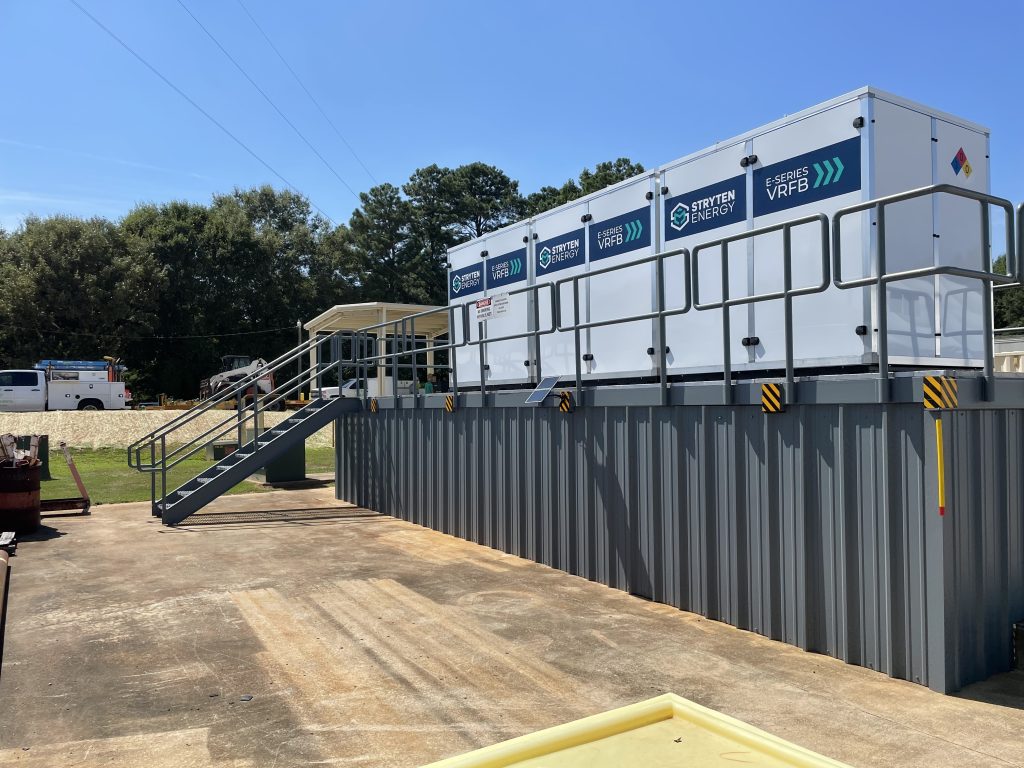Essential power battery terminology can sound like a foreign language at times. Understanding the key terms and phrases is important when evaluating an energy storage solution for your application. To help, we have created this glossary of key terms and phrases related to the essential power energy storage industry.

Battery Terminology
Battery Energy Storage Systems (BESS) – Rechargeable battery systems that can store and distribute energy from different sources, such as the grid or renewable energy sources like wind and solar. The system consists of the battery itself along with all the hardware and software to safely control and operate it. The system can be developed using a variety of different battery technologies, including lead, lithium and flow batteries. A wide variety of battery chemistries will be needed in the transition to clean energy.
Curtailment – The deliberate reduction in output below what could have been produced to balance energy supply and demand or due to transmission constraints.
Cycle Life – The number of charge and discharge cycles a battery can provide before losing performance.
Depth of Discharge – The percentage of battery capacity that has been used relative to the total capacity.
Duration – The length of time a storage system can sustain power output at its maximum discharge rate, typically expressed in hours.
Energy Independence – Strengthening domestic manufacturing in the U.S. to minimize supply chain disruptions and bolster national security.
Energy Resilience – The ability to cope with and recover from disruptions in the energy supply.
Energy Security – Confidence in having continuous access to reliable sources of energy. To achieve energy security, we need to capture all available energy generated by traditional and renewable power sources.
Energy Shifting – Shifting the time between when renewable energy is generated and when it is used; when solar generation exceeds demand during the day, and wind generation often exceeds demand at night. Energy storage systems are charged with excess renewable generation, store it, and then discharge it during time periods when demand exceeds renewable generation.
Lithium Battery – A battery that includes rechargeable cells that are based on one of the many different lithium chemistries currently available. Lithium battery systems are well suited to short-duration – up to four (4) hours – energy storage applications.
Long-Duration Energy Storage – Technology capable of storing energy for prolonged periods, generally considered to be anything over six (6) hours.
Microgrid – A small, independent energy system that combines power generators, such as wind and solar, with energy storage systems that can operate either connected to or disconnected from the main power grid.
Peak Shaving – Using a BESS to reduce the maximum power used from the grid during the day, thus minimizing demand charges on one’s utility bill, the process of reducing the amount of energy purchased from utility companies during peak hours of energy demand. The same amount of energy is used from the grid, but it is spread more evenly throughout the day.
Renewable Energy – Energy produced from sources like the sun and wind that are naturally replenished and do not run out.
Stacked Services -– The ability for a BESS to provide multiple pathways to reduce power bills, as well as increase resiliency. For instance, the BESS can both peak shave and provide a bridge to keep a facility running between the time the grid goes down and comes back online.
Storage Capacity – The amount of energy that a BESS can hold.
Thermal Runaway – Typically used to describe the tendency of a small failure in a lithium- based energy storage system to cascade into a much larger, system wide failure, typically in the form of a fire. VRFB systems do not use cells and so cannot experience thermal runaway.
Vanadium Redox Flow Battery (VRFB) – A unique battery technology that enables the realization of an electric grid powered by renewable energy sources. The VRFB can safely shift energy for many hours each day – up to 10-12 hours – and last more than 20 years, as long as the solar panels and wind resources, without needing to be replaced or augmented.
Watts – Basic unit of power, representing the rate at which energy flows through an electrical system. A watt-hour is the amount of energy produced by a one-watt source running for one hour. Energy storage systems can be measured in terms of kilowatts/kilowatt hours (kWh), megawatts/megawatt hours (MWh) and gigawatts/gigawatt hours (GWh).







